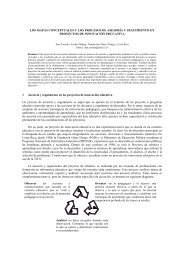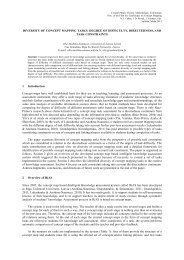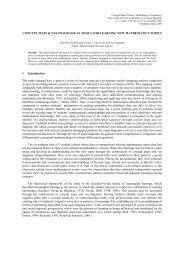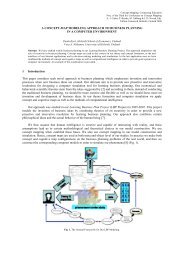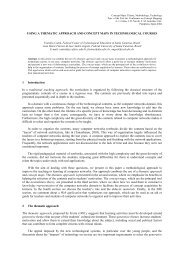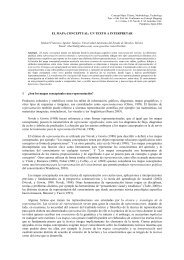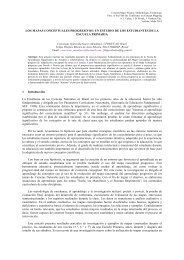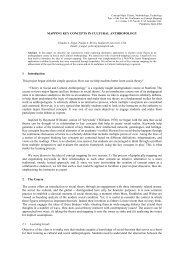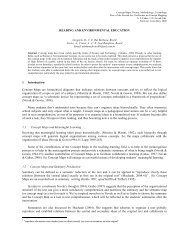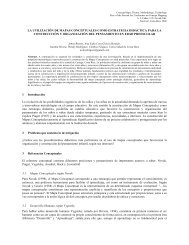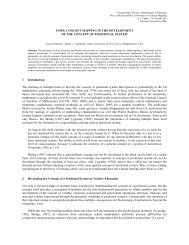CMAP LINKING PHRASE CONSTRAINT FOR THE STRUCTURAL ...
CMAP LINKING PHRASE CONSTRAINT FOR THE STRUCTURAL ...
CMAP LINKING PHRASE CONSTRAINT FOR THE STRUCTURAL ...
Create successful ePaper yourself
Turn your PDF publications into a flip-book with our unique Google optimized e-Paper software.
3.3 Phase 3: constrained Cmap taskThe learners were asked to map the text a third time, again using CmapTools software, but with only theargumentation links listed in section 2.3. Task performance was rather uniform in choice of links from the arrayabove, and map structure and content varied relatively little. The following difficulties were observed in thelearners’ argument mapping:1. Some learners ignored the constraint on link content.2. Some learners added link types (25 occurrences, 5 of 12 subjects)3. Some learners varied the language in the constrained links (4 of 12 subjects)4. Some learners added information not contained in the original text (2 occurrences).See Figure 6 for an example of student mapping in this scenario.Figure 6. Map with links constrained to argument moves.4 ConclusionIn the label-constrained mapping approach described here, most subjects did successfully separate persuasiveand information-bearing text without specific instructions to do so, and without instruction in how to do so. Ofcourse the mapping approach is not essential to the acquisition of that skill: the value of this mapping approachlies in the visual accessibility of the representation of structured text information, and in the forced low-verbalarticulation of relations between argument elements.Informal observation of learner behavior in constrained-link scenarios suggests that constraining linkcontent can lead TAW learners to accurate, minimal summarization of the arguments in TAW text. Thefollowing questions have been identified for future study by the author.1. Constrained-link maps afford valuable support to TAW learner analysis of text. Do they also affordvaluable support to TAW learner composition processes?2. What is the optimal size and content of the array of linking phrases for the representation of TAWargumentation?3. Does the ad hoc representation technique developed here have implications for a multi-level model ofthe representation of text-based presentation of information structures?4. Does the chart in figure 2 present a valid, revealing framework for the classification of argumentanalysis error?ReferencesCañas, A. J., Hill, G., Carff, R., Suri, N., Lott, J., Eskridge, T., et al. (2004). CmapTools: A KnowledgeModeling and Sharing Environment. In A. J. Cañas, J. D. Novak & F. M. González (Eds.), Concept Maps:




